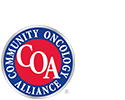Accelerating Melanoma Research
It’s Melanoma Awareness Month and this week, Real World Health Care is pleased to shine a light on The Society for Melanoma Research. We spoke with the Society’s President, Keith Flaherty, MD. In addition to his role with SMR, Dr. Flaherty serves as director of the Henri & Belinda Termeer Center for Targeted Therapy and the Richard Saltonstall Chair in Oncology at the Massachusetts General Hospital Cancer Center.
Supporting a Diverse Melanoma Research Community
Real World Health Care: Please describe the mission of the Society for Melanoma Research.

Dr. Keith Flaherty, Society for Melanoma Research
Keith Flaherty: The Society for Melanoma Research was intended to be a scientific home for the melanoma research community. When it was created in 2003, there was no organization run by and for melanoma scientists that convened regular scientific meetings to provide a venue for publication of melanoma research. Our research community is quite diverse, spanning many medical specialties and numerous scientific disciplines. Simply bridging the divide between the clinical research community and laboratory-based investigators was central to the SMR mission.
RWHC: What type of research programs do you support and how do you support them?
KF: Our primary supporting role is served by organizing and hosting an annual, international, scientific conference focused on melanoma research. We support travel to the meeting for trainees and young scientists. Plus, we maintain a web-based presence and newsletter to update our members on emerging discoveries. Additionally, we partnered with the International Federation of Pigment Cell Societies to transform a pre-existing Journal (Pigment Cell Research) into Pigment Cell and Melanoma Research in order to have a peer-reviewed journal supported by SMR with scientific leadership by melanoma researchers.
Combination Therapy Research
RWHC: Are there any studies your members are involved in that are particularly promising at this moment?
KF: As ours is the only international scientific society focused on melanoma research, our membership includes all of the clinical investigators from the major academic centers who have been conducting groundbreaking clinical trials in melanoma over the past eight years. Outcomes for patients with metastatic melanoma have been transformed by the development of molecularly targeted and immunotherapies. The most promising current trials have been investigating combinations of these two approaches at the same time. Preliminary results presented at the 2016 SMR Congress suggest that these combination approaches may further improve outcome significantly.
Multidisciplinary Collaboration
RWHC: Why are multidisciplinary collaborations so important in developing new therapies for melanoma? How is the SMR working to encourage or create such collaborations?
KF: Multidisciplinary collaborations can be defined by teams of clinical investigators, such as medical oncologists, surgical oncologists, pathologist, and radiologists. Or, they can encompass clinical and laboratory-based investigators partnering together. We have numerous examples of each kind within and across the major academic medical centers with a focus on melanoma research.
For years, the melanoma research community was characterized by empiric clinical trials in which therapies that had been successful in other cancer types were tried in melanoma, but with little scientific basis and focus on understanding whether those therapies were doing their molecular “job” or not. Since the late 2000s, the emergence of BRAF, MEK, CTLA-4 and PD-1 inhibitors has provided not only substantial benefit to patients, but it has transformed the research approach by bringing clinical and laboratory-based scientists together. Even for these FDA approved therapies, there remain questions regarding mechanisms of action and resistance which are critical to informing rational combination therapies that will be the focus of the next generation of clinical trials. This approach literally taught us how to define the limits of these partially effective therapies and will hopefully accelerate our pace of progress.
More Funding, More Time
RWHC: What are the biggest challenges melanoma researchers face today and how can they be overcome?
KF: Funding and time. For a decade, we have seen a decline in publicly funded research. The U.S. has always been the largest investor in biomedical research, and pairing that down has had global impact. New discoveries are made through publicly funded research before private sector research comes in to take those discoveries and reduce them to practice. This has made the melanoma research field increasingly dependent on philanthropic foundations and individuals.
Additionally, clinical researchers are constantly pulled between clinical duties and research activities. Many medical centers cannot afford to have their clinicians spending time on research. Therefore, research funding is needed to cover the portion of their time that is away from direct patient care. With the accelerated pace of technology development relevant to biomedical research and the inroads that we have made in the past eight years with regard to therapeutic approaches, there is more opportunity now than ever to accelerate the application of science to medicine for melanoma patients. But, these rate limiting factors are unquestionably slowing us down.
Industry’s Role
RWHC: What role do you think the biopharmaceutical industry should play in furthering research into new melanoma therapies?
KF: As always, advancing diagnostic and therapeutic approaches to widespread use requires risk-taking and investment by the biopharmaceutical industry.
In the cancer field overall and melanoma specifically, we have seen tighter integration between the public and private sectors that has come as a consequence of the initial successes with the now FDA-approved drugs. This has drawn in more interest from companies developing novel diagnostic technology that may allow us not only to find localized, advanced melanoma at an earlier point, but also allow us to deploy the optimal therapy for each patient in a personalized way. And, of course, the very costly process of drug development requires involvement of the biopharmaceutical industry from beginning to end.
Through close collaboration with the academic scientific community, we are able to discern very early in development whether a new therapy is accomplishing its biological task before investing massive additional resources in large-scale clinical trials to prove whether or not it has a clinical impact.
Dramatic Unmet Need
RWHC: What initially attracted you to the field of melanoma research?
KF: I was attracted to the melanoma field first and foremost by the dramatic unmet need. It is a cancer that has an awe-inspiring ability to metastasize from tiny primary tumors, making the challenge of early detection a key hurdle. And, when melanoma metastasizes, it is one of the most aggressive cancer types. Melanoma affects a far greater proportion of young adults than other more common cancers, making it one of the leading cancers with regard to aggregate years of life lost. At the time that I was entering the field, it seemed that the pace with which biologic insights into melanoma were being made was increasing. And, right at the end of my training, BRAF mutations were discovered and that drew my focus for all of the years since.
A MESSAGE FROM OUR SPONSOR:
The HealthWell Foundation, sponsor of Real World Health Care, is proud to have supported the melanoma patient community in recent years with copayment and premium assistance. We have helped more than 2,230 melanoma patients afford their treatments since approving our first Melanoma grant in 2011 — thanks to the generous support of our corporate partners. Due to high patient volume, our melanoma fund is temporarily closed until we receive additional funding. We invite corporations and individuals to help us meet this demand by contributing to our Melanoma-Medicare Access Fund, so nobody goes without essential medications because they cannot afford them.

















